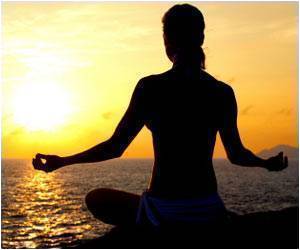Are you suffering from high blood pressure (hypertension)? Then, try out hot yoga. Practicing yoga under hot and humid conditions with room temperatures around 105oF can lower your blood pressure naturally.
- Hot yoga can keep high blood pressure (hypertension) at bay
- Practicing yoga under hot and humid conditions can reduce your blood pressure levels naturally
Read More..
What is Hot Yoga?
Hot yoga is a modern practice, typically offered in a hot, humid atmosphere, with room temperatures around 105 degrees Fahrenheit. Some believe the practice of hot yoga replicates the heat and humidity of India, where yoga originated, while others look at the excessive sweating as a way to rid the body of impurities.
"The findings are very preliminary at this point, yet they're somewhat promising in terms of unveiling another unique way to lower blood pressure in adults without the use of medications," said Stacy Hunter, Ph.D., study author and assistant professor and lab director of the cardiovascular physiology lab at Texas State University in San Marcos, Texas.
"Hot yoga is gaining popularity, and we're even seeing other styles of yoga, like Vinyasa and power yoga, being offered in heated studios."
Hunter and colleagues recruited 10 men and women, between ages 20 and 65 years. Participants had either elevated blood pressure (systolic blood pressure between 120 mmHg to 129 mmHg and diastolic pressure less than 80 mmHg) or stage 1 hypertension (130 mmHg to 139 mmHg systolic and 80 mmHg to 89 mmHg diastolic pressure.) These adults were not taking any type of blood pressure medication and had been sedentary -- meaning they had not engaged in a regular physical fitness routine -- for at least six months before the study.
Findings of the Study
At 12 weeks, they found:
Systolic blood pressure dropped from an average 126 mmHg at the study's start to 121 mmHg after 12 weeks of hot yoga. Average diastolic pressure also decreased from 82 mmHg to 79 mmHg in the hot yoga group.
Average blood pressure did not change among the five adults in the control group, those who did not take hot yoga classes.
Perceived stress levels fell among those in the hot yoga group but not in the non-yoga group.
While waking systolic and diastolic pressures fell in the hot yoga group, blood pressure readings taken during sleep did not change.
There were no changes in vascular function in either group.
"The results of our study start the conversation that hot yoga could be feasible and effective in terms of reducing blood pressure without medication," Hunter said.
"However, larger studies need to be done before we can say with confidence that hot yoga has a positive impact on blood pressure."
Simple Tips for Hot Yoga Safety
Taking safety precautions is important, according to Hunter.
Adults taking hot yoga classes
- should be hydrated when they arrive
- drink water throughout the class, dress appropriately
- not overdo it
- be aware of signs and symptoms of heat illness
Key Note of the Study
Although hot yoga is safe for most people, it is better to always talk to your doctor before starting any new exercise regimen to know what it is best for you.
Source-Eurekalert
















